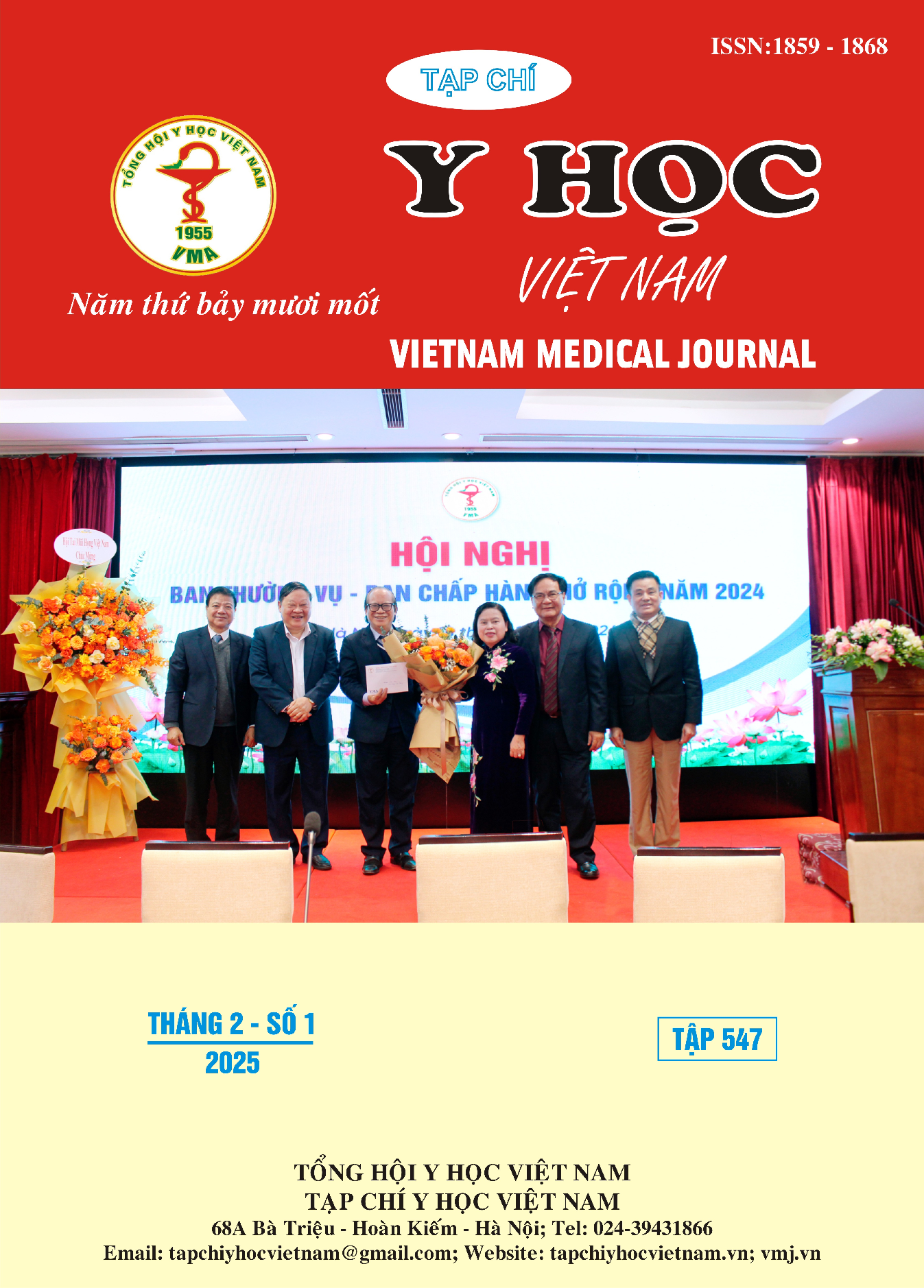CLINICAL CHARACTERISTICS, IMAGING DIAGNOSIS, AND SURGICAL OUTCOMES OF CEMENTLESS HEMIARTHROPLASTY FOR FEMORAL NECK FRACTURE IN ELDERLY PATIENTS AT HANOI MEDICAL UNIVERSITY HOSPITAL
Main Article Content
Abstract
This study describes the clinical characteristics, imaging findings, and outcomes of cementless hemiarthroplasty for femoral neck fracture in elderly patients. A cross-sectional, retrospective, and prospective study was conducted on 52 patients aged 75 and above at Hanoi Medical University Hospital from January 2022 to March 2024. Outcomes were assessed using the Harris Hip Score, covering factors like pain level, mobility, and postoperative complications. The average age was 82.29 ± 5.21, with a majority of female patients (80.8%), and household accidents accounted for most injuries (90.4%). The most common comorbidities were hypertension (51.9%) and diabetes (28.8%). The average surgical time was 50.00 ± 7.34 minutes, with 53.8% of patients not requiring blood transfusion. After surgery, 100% of patients achieved ≥80% stem fit, with an average hospital stay of 7.62 ± 3.79 days, and 71.5% achieved good or excellent outcomes according to the Harris Hip Score, with 100% pain-free at three months. Cementless hemiarthroplasty is an effective and safe treatment for femoral neck fractures in the elderly, promoting rapid functional recovery, pain reduction, and minimized complications from prolonged bed rest. This approach is particularly suitable for older patients without severe chronic comorbidities, enhancing quality of life post-surgery.
Article Details
Keywords
Femoral neck fracture, cementless hemiarthroplasty, elderly, clinical characteristics, surgical outcomes
References
2. Egol KA, Koval KJ, Zuckerman JD. Functional recovery following hip fracture in the elderly. J Orthop Trauma. 1997-11 1997;11(8):594-599.
3. Schwartsmann CR, Jacobus LS, Spinelli LF, et al. Dynamic Hip Screw for the Treatment of Femoral Neck Fractures: A Prospective Study with 96 Patients. ISRN Orthop. 2014;2014:257871.
4. Sinno K, Sakr M, Girard J, Khatib H. The effectiveness of primary bipolar arthroplasty in treatment of unstable intertrochanteric fractures in elderly patients. N Am J Med Sci. 2010; 2(12):561-568.
5. Hân NN. Đánh giá kết quả phẫu thuật thay khớp háng bán phần không xi măng điều trị gãy cổ xương đùi ở bệnh nhân 80 tuổi trở lên. Luận văn thạc sỹ; 2021.
6. Pajulammi HM, Pihlajamaki HK, Luukkaala TH, Nuotio MS. Pre- and perioperative predictors of changes in mobility and living arrangements after hip fracture--a population-based study. Arch Gerontol Geriatr. 2015;61(2): 182-189.
7. Kelly-Pettersson P, Samuelsson B, Muren O, et al. Waiting time to surgery is correlated with an increased risk of serious adverse events during hospital stay in patients with hip-fracture: A cohort study. Int J Nurs Stud. 2017;69:91-97.
8. Luân TT. Đánh giá kết quả phẫu thuật sớm thay khớp háng bán phần điều trị gãy cổ xương đùi ở người cao tuổi. Luận văn chuyên khoa cấp 2; 2020.
9. Lawrence JE, Fountain DM, Cundall-Curry DJ, Carrothers AD. Do Patients Taking Warfarin Experience Delays to Theatre, Longer Hospital Stay, and Poorer Survival After Hip Fracture? Clinical Orthopaedics and Related Research. 2017;475(1):273-279.
10. Thành ĐX. Nghiên cứu kết quả thay khớp háng toàn phần không xi măng và thay đổi mật độ xương quanh khớp háng nhân tạo. Luận án tiến sỹ y học. Đại học Y Hà Nội; 2012.


